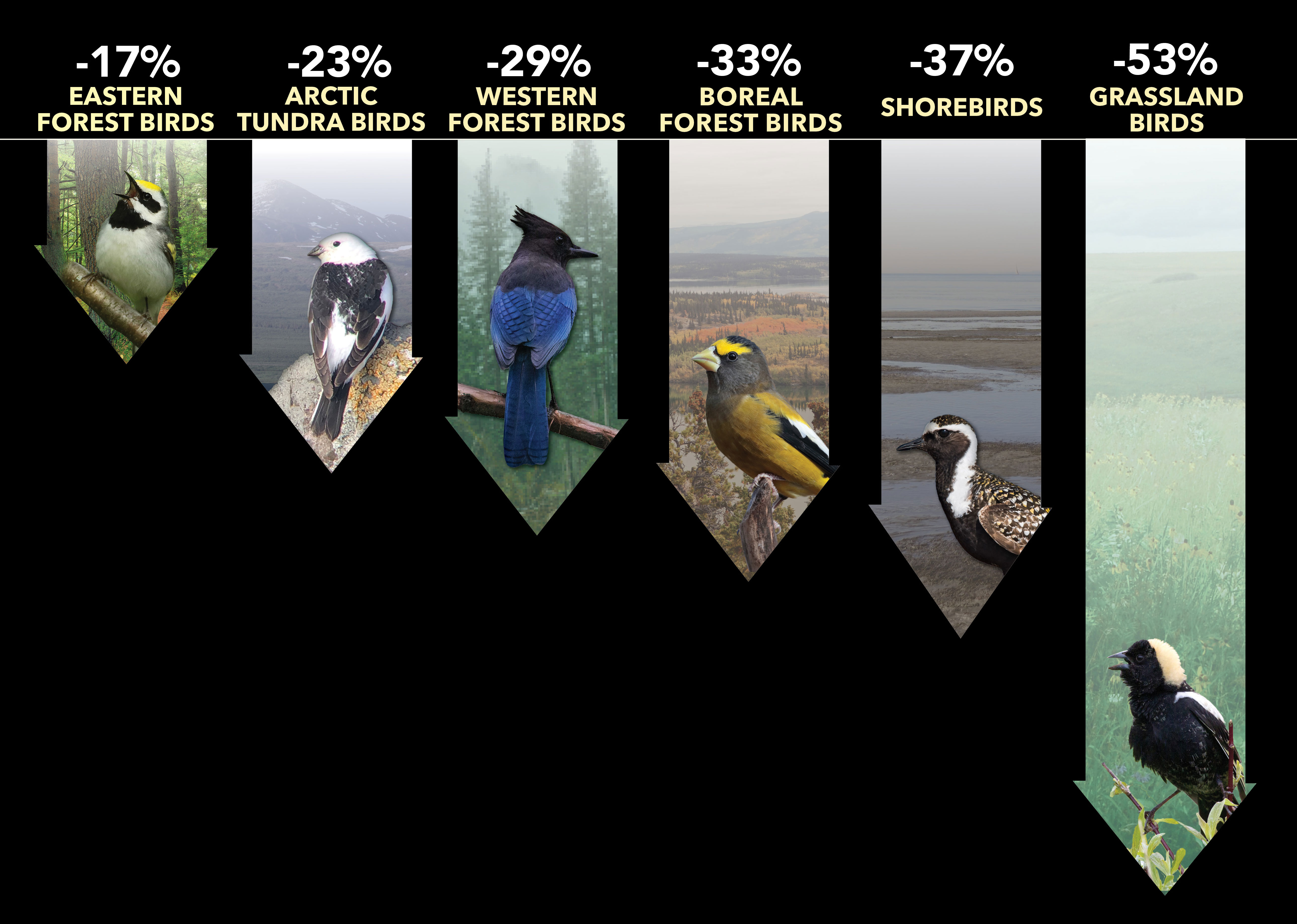A recent study concludes that the birds of Canada and the United States have taken a substantial hit in the last 49 years. Researchers from several institutions in the U.S. and Canada, including the American Bird Conservancy, the Bird Conservancy of the Rockies, the Cornell Laboratory of Ornithology, and Environment and Climate Change Canada, joined forces for the study.
To create a clear picture of the state of North American birdlife, the scientists combined data from various independent sources. According to the authors, North America's bird populations have decreased by nearly 3 billion birds. They also note that 90% of these losses affected just 12 bird families, including warblers, sparrows, finches, and swallows. Species that have taken notable hits include birds that live in grasslands, the numbers of which decreased by 53%, equating to about 720 million birds. Also, shorebirds, which have struggled in the past, lost more than one-third of their numbers. One of the major players is likely to be habitat loss due to expanding urban sprawl and agriculture. Factors that might be playing a role include urban domestic cat populations, collisions with glass structures and buildings, and the increasing use of pesticides, which kill the insects that birds rely on for food.
Pesticide use and loss of habitat to farmland are some of the most significant contributors to the decline in bird populations.. Although scientists have known for a long time that certain bird species were threatened by human activities, this study reveals that these issues apply to birds of nearly all species.
Although species extinctions tend to hog the limelight, studying reductions in animal numbers is just as important. Significant changes in population density can have wide ranging effects on ecosystems. A recent study attempts to understand how bird populations are changing across North America. Some scientists use wild bird populations as an indicator of the general health of an ecosystem, so any changes could be significant for the natural world at large.
Sources: Medical News Today, 26 September 2019
https://www.medicalnewstoday.com/articles/326420.php
Cornell Daily Sun, 26 September 2019
https://cornellsun.com/2019/09/26/ornithologists-birdwatchers-uncover-s…

- Login om te reageren
